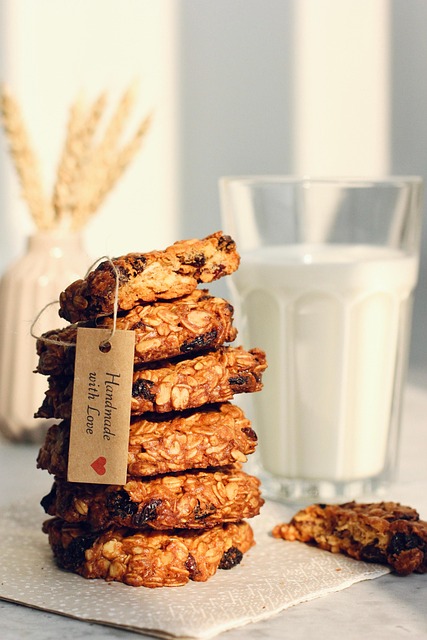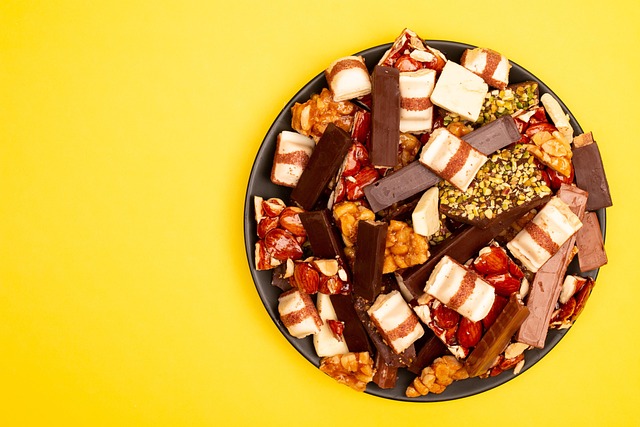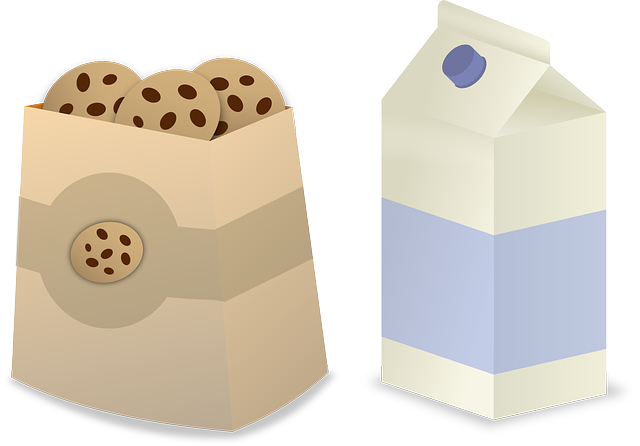Understanding food-safe labeling for custom cookies involves adhering to regulations like FDA guidelines, listing ingredients, allergen declarations, and storage instructions transparently. In the artisanal realm of custom cookies, labels must disclose specialized ingredients, natural flavors, decorations, and fillings accurately. Compliance includes clear indications of cross-contamination risks, using suitable materials (e.g., high-quality paper, biodegradable plastics), and creating visually appealing graphics with accurate, concise information. Regular compliance checks ensure labels meet industry standards, avoiding misleading claims and maintaining consumer trust in custom cookie brands.
In the baking industry, especially with the rise of custom cookies, understanding food-safe label regulations is paramount for businesses aiming to meet safety standards and protect consumers. This comprehensive guide delves into the intricacies of food-safe labeling, focusing on unique requirements for custom cookies. We’ll explore key components, material considerations, design best practices, compliance checks, and common mistakes to avoid, empowering bakers to navigate these essential regulations effectively.
- Understanding Food-Safe Labeling: An Overview of Regulations
- Custom Cookies and Their Unique Labeling Requirements
- Key Components of a Food-Safe Label
- Material Considerations for Cookie Labels
- Best Practices for Designing Eye-Catching Labels
- Compliance Checks: Ensuring Your Labels Meet Standards
- Common Mistakes to Avoid in Food Labeling
Understanding Food-Safe Labeling: An Overview of Regulations

Understanding Food-Safe Labeling ensures that consumers receive accurate and truthful information about the products they purchase, especially when it comes to custom cookies. Regulations governing food labeling are designed to protect public health by providing clear disclosures about ingredients, nutritional content, and potential allergens. These rules are enforced by regulatory bodies like the FDA in the United States, which sets standards for labeling across various food categories.
For custom cookie manufacturers, adhering to these regulations is vital. This involves accurately listing all ingredients, including any additives or preservatives, and declaring potential allergens such as nuts, dairy, or gluten. Proper labeling also includes providing clear instructions for storage and shelf life, ensuring that consumers receive guidance on how to safely enjoy their baked goods. Compliance not only meets legal requirements but also builds trust with customers who value transparency in their food choices.
Custom Cookies and Their Unique Labeling Requirements

In the realm of food safety, Custom Cookies present unique labeling challenges. These artisanal treats often contain specialized ingredients or cater to specific dietary needs, necessitating precise and detailed labels. Beyond the standard listing of ingredients and allergen information, custom cookie makers must consider additional elements like decorations, fillings, and any natural or artificial flavors used.
Regulations for Custom Cookies go beyond general food labeling laws. They require specific disclosure of unique ingredients, such as artisanal mixes, organic spices, or locally sourced nuts, which can be marketed as premium features. Furthermore, labels must clearly indicate any potential cross-contamination risks, especially when multiple types of cookies are produced in the same facility. Effective labeling for Custom Cookies not only ensures consumer safety but also allows them to appreciate and understand the unique qualities that make these treats special.
Key Components of a Food-Safe Label

When it comes to food-safe labeling, especially for custom cookies and baked goods, several key components ensure consumer safety and regulatory compliance. The first crucial element is clarity in indicating the product’s ingredients. This includes a comprehensive list of all additives, preservatives, and any potential allergens present. For instance, for custom cookies, clearly stating whether they contain nuts, dairy, or gluten is essential to prevent allergic reactions.
Another vital aspect is the inclusion of nutritional information. Calorie counts, serving sizes, and a breakdown of macronutrients help consumers make informed decisions about their dietary choices. This becomes particularly important in the case of specialty or custom cookies, where unique ingredients might alter traditional nutritional profiles. Effective labeling also conveys manufacturing practices, such as whether the facility handles various types of food, which is critical for avoiding cross-contamination.
Material Considerations for Cookie Labels

When it comes to labeling custom cookies, material considerations are paramount to ensure food safety and regulatory compliance. The choice of materials for cookie labels is crucial as they must be both durable and compatible with food products. Typically, paper or plastic labels are preferred due to their non-reactivity and ability to withstand handling processes without transferring harmful chemicals to the cookies.
For custom cookie labels, using high-quality materials like food-grade paper or biodegradable plastics is essential. These materials not only ensure that no toxic substances leach into the cookies but also maintain product integrity during storage and transportation. Additionally, proper ink selection is vital; non-toxic, food-safe inks must be used to prevent any potential contamination. This attention to material details guarantees that cookie labels serve their purpose without compromising the safety and quality of the baked goods.
Best Practices for Designing Eye-Catching Labels

When designing food-safe labels for custom cookies, the goal is to create visually appealing and informative graphics that meet regulatory standards while enticing customers. Start by selecting a vibrant color scheme that aligns with your brand identity, ensuring contrast enough to make text and icons easily readable. Utilize high-quality images or illustrations relevant to your cookie varieties; for instance, a delightful sketch of a freshly baked cookie could be a captivating choice.
Consider incorporating clear and concise language, using simple fonts to convey essential information about ingredients, allergens, and nutritional facts. Organize content logically, often in bullet points, to help consumers quickly scan the label. Ensure your design adheres to applicable regulations by providing accurate ingredient lists, allergen declarations, and any mandatory nutrition facts panels. Remember, an eye-catching yet informative label not only meets legal requirements but also adds value to your custom cookies’ overall brand experience.
Compliance Checks: Ensuring Your Labels Meet Standards

Compliance checks are a vital aspect of maintaining food safety and ensuring your labels meet industry standards, especially when it comes to custom cookies or any other edible products. Regular audits of your labeling process can help identify potential issues and ensure adherence to relevant regulations. These checks cover various elements, from font size and placement to the inclusion of specific information like ingredients, nutritional facts, and expiration dates.
By conducting thorough compliance checks, businesses can prevent misleading or incomplete labels that may pose health risks to consumers. It’s essential to stay updated on industry guidelines, especially when offering specialized products like custom-made cookies, which often require unique labeling to cater to diverse dietary needs and preferences. Regular reviews and adjustments to your labeling practices will help maintain consumer trust and confidence in your brand.
Common Mistakes to Avoid in Food Labeling

In the world of food safety, accurate labeling is paramount, and many bakeries and custom cookie manufacturers often fall into common traps that can lead to regulatory issues. One of the primary mistakes to avoid is inadequate or misleading information on labels. This includes omitting essential details such as ingredients, allergen warnings, and nutritional facts. For custom cookies, ensuring clarity in ingredient lists is crucial, especially when offering diverse options like gluten-free, vegan, or nut-free varieties.
Additionally, labels should never make unsubstantiated health claims. While marketing your custom cookies as “all-natural” or “organic” might be appealing, these terms require specific certifications and labeling standards. Another pitfall is inconsistent labeling across product lines. Regulatory bodies expect uniform information presentation, so double-check that dates, lot numbers, and storage instructions are applied consistently to every batch of custom cookies produced.






